I’ve been looking forward to writing this article for a while as Swooping Season is such a uniquely Australian experience, slightly ridiculous and rather hilarious, although, for some people, it is a genuinely traumatic and anxiety-inducing season. At this time of year, magpies all over Australia are laying eggs and starting to raise their hatchlings. Breeding males become highly protective of their nest and some take their job very seriously! They defend their nests by relentlessly swooping anything they view as a threat to their eggs and hatchlings, and for some magpies, this includes humans.
For those who are not Australian or who have never experienced magpies swooping, here is a hilarious video (3:27) worth watching but WARNING: lots of swearing!
The Australian magpie (Gymnorhina tibicen) is a black and white passerine (perching rather than paddling) bird. They were originally considered to be three separate species due to differences in their colour patterns and geographical spread but are now recognised as one species with nine subspecies. European colonisers named these black and white birds after their own black and white coloured magpie, and though they are distinctly different species (the English magpie is part of the Corvid family, same as crows), the name stuck.



Magpies have a long breeding season, which varies in different parts of the country; in the northern regions of Australia they will breed in the cool season between June and September, but in the cooler southern regions, they won’t commence breeding until August or September and may continue until January in some alpine areas.
During the breeding season, from the time the eggs hatch to when their young leave the nest, the male magpie becomes highly protective of their nest and will fearlessly dive-bomb and harass any animal they consider to be a threat, including humans. They are strategic in their attacks, using the sun and targeting blind spots behind their victim’s heads. Many will only swoop and click their beaks to instil fear as they woosh down and veer off with lightning speed, but some are so vicious that they draw blood and cause lacerations. There have even been deaths from people trying to escape or being startled by swooping magpies. Only a relatively small number of magpies will attack humans but the ones that do will generally continue to do so during every breeding season throughout their lives.
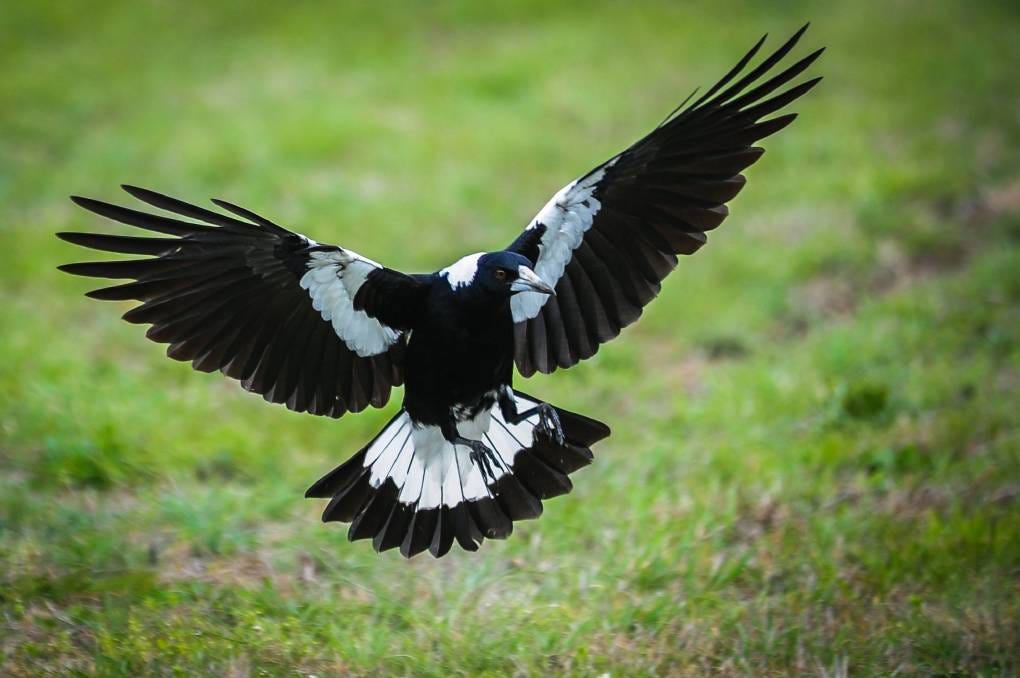
Local Councils all over Australia are well-prepared for the swooping season. They often erect signs in areas known to be the territory of human or dog-aggressive swooping magpies.
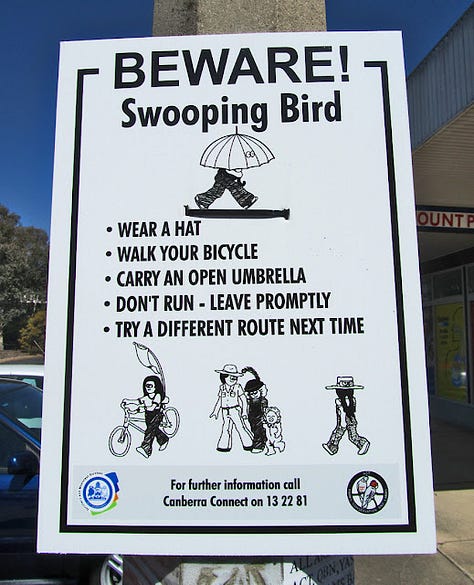
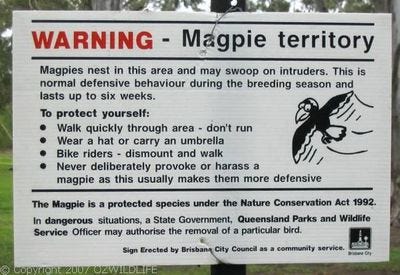
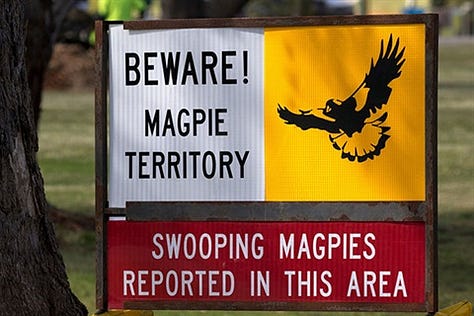
Magpies can recognise up to 100 different human faces and may swoop those they do not recognise or people they view as threats. The best way to avoid being swooped is to make friends with magpies in your local area (neighbourhood, walking route etc.) or by avoiding the area if possible until their offspring have left the nest, usually six weeks from hatching. Feeding magpies is not recommended as they can become too dependent on humans for easy feed and what they are usually fed (mince or dog kibble) is not good for their health. If you need to enter a swooping magpie’s territory, wear a broad-brimmed hat or carry an umbrella and if you are riding a bike, get off your bike and walk so you don’t risk having an accident.
I have the lovely good fortune of knowing children’s book writer Nicole Godwin, and illustrator Suzannah Crispe who have teamed up for the CSIRO publication of SWOOP, a children’s book that uses humour and beautiful illustrations to explain why magpies swoop and our fascination with them.
Not only do swooping magpies make it into children’s books and even the daily news throughout September, but they’ve also made it into the world-famous Australian children’s TV show, Bluey. In Season 3 Episode 8, Curry Quest Bingo and her Dad are swooped at the park by a local magpie while they are on the way to their friend’s house for a curry swap. In the end they find a way to make it back unscathed.
Although notorious for their swooping, magpies are also known for their complex and melodious calls, their humorous and charming antics, their sociability, their curiosity and their intelligence. They are one of the most successful Australian animals for adapting to the urban environment and human cohabitation.
Magpies can form strong bonds with humans. This lovely video from The Dodo (4:47 mins) shows many of the positive attributes of magpies and their ability to bring joy to their human friends.
These bonds can be so strong that some say they can heal each other, like the relationship between a magpie called Penguin and the Bloom family, which has been documented in several books, documentaries, newsreels, and even adapted into an Academy Award-nominated film starring Australian actors Naomi Watts and Jackie Weaver.
Penguin Bloom is an extraordinary true story of recovery, hope and courage as one injured bird and her human family learn to heal and celebrate life, featuring the gorgeous photography of Cameron Bloom and a captivating narrative by New York Times bestselling author of The Blue Day Book, Bradley Trevor Greive. Harper Collins Publishers

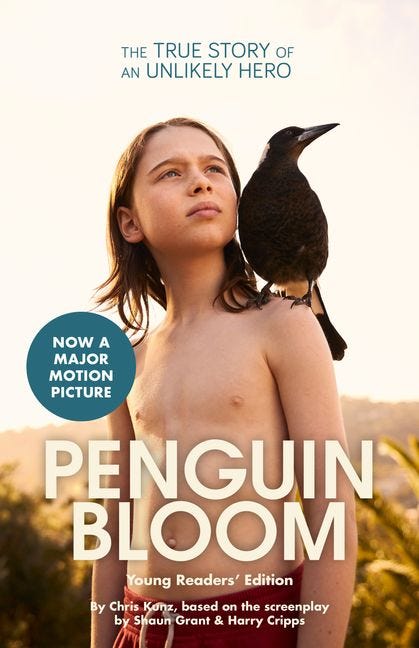
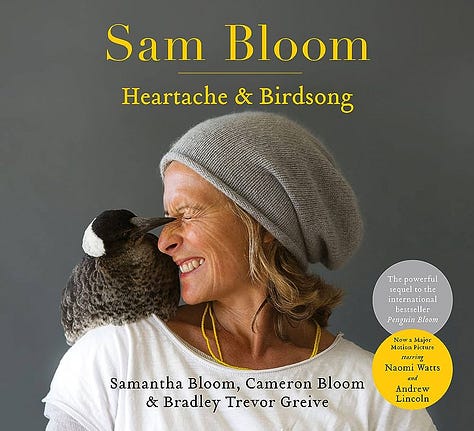
Australia’s First Nations peoples have many Dreaming stories about the magpie. The lovely Dreaming Story below is from the Wathaurong people of Victoria (the Noongar people of Western Australia also tell this story):
‘Long time before today…
The sky covered the earth making everyone crawl around in the dark. The Magpies, being proud and industrious, gathered and worked to raise the sky so everyone could move about freely.
They gathered some long sticks and fighting hard they lifted the sky up. They placed the long sticks on small and big rocks; they fought to lift the sky even higher.
The sky split open, showing the beauty of the first sunrise. They were so overjoyed to see the light and feel the warmth of the sun’s heat, they burst into song. As they sang, the blanket of darkness broke and drifted away like clouds.
To this day the Magpies greet the sunrise with their joyful song.’
Re-told by Uncle David Tournier. Source: Australian Sacred Journeys
The magpie, called Diru’wun by the D’harawal people of the Sydney basin, was an important figure in their Dreaming stories and folk Lore. The D’harawal knew that:
…when the Currawongs fly high in the sky, and the Magpies sing their special song, rain always follows.
The following link will take you to a PDF with a beautifully written and illustrated Dreaming story of Diru’wunan and Diru’wun: The Currawongs and the Magpies. This story is freely available on the internet through Dharawalstories.com, a website created by D’harawal elder, knowledge holder and botanist Aunty Fran Bodkin. Aunty Fran also created the wonderful D’harawal seasonal calendar shown below, illustrated by Lorraine Robertson.
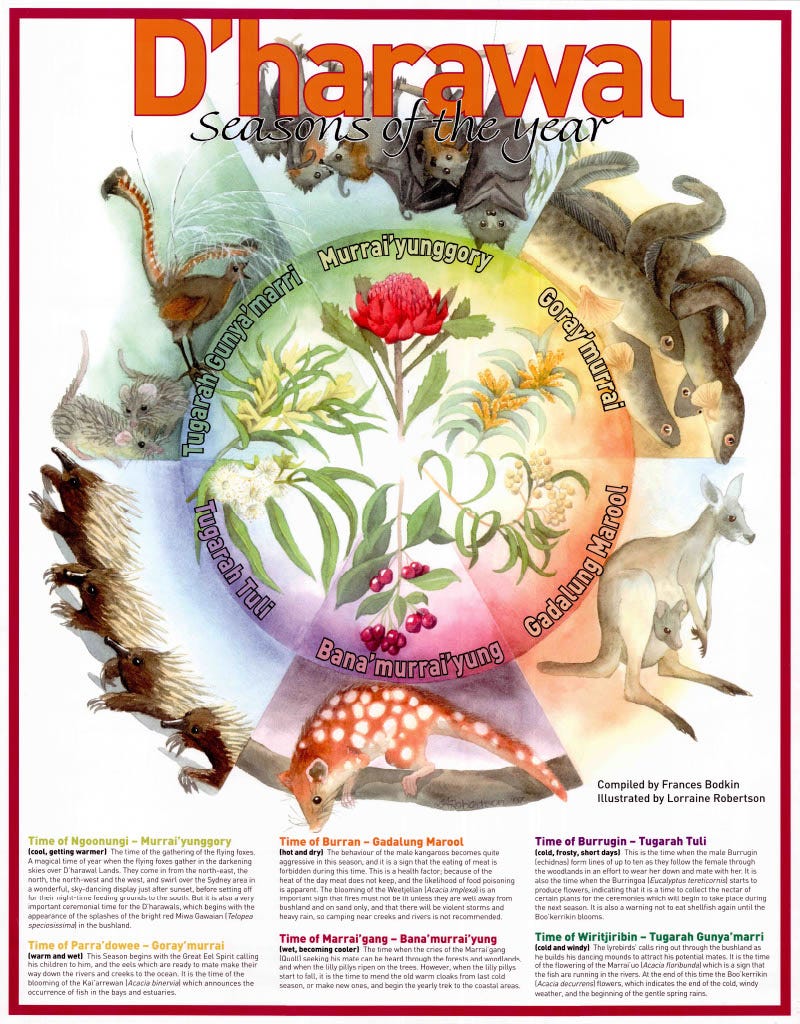
Fun fact… a group of magpies is called, unsurprisingly, a parliament.
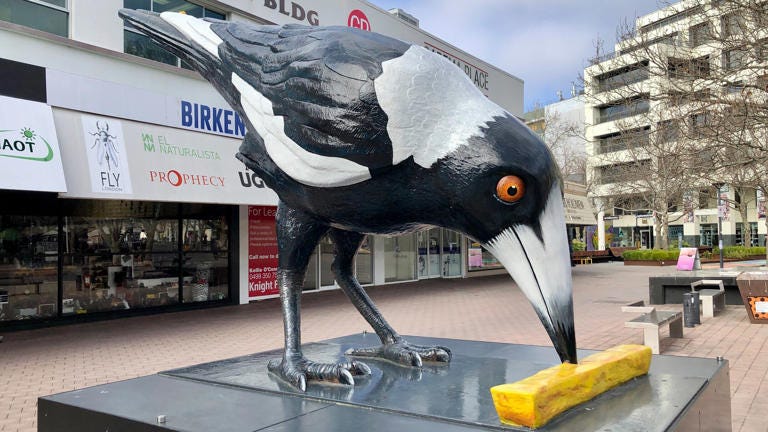
I hope you enjoyed this article as much as I enjoyed researching it! Have the magpies started swooping in your area yet? Have you been swooped or have you found a way to make friends with your local magpies? Share your stories in the comments below.
Next week we explore the Spring Equinox traditions of Eastern Europe.





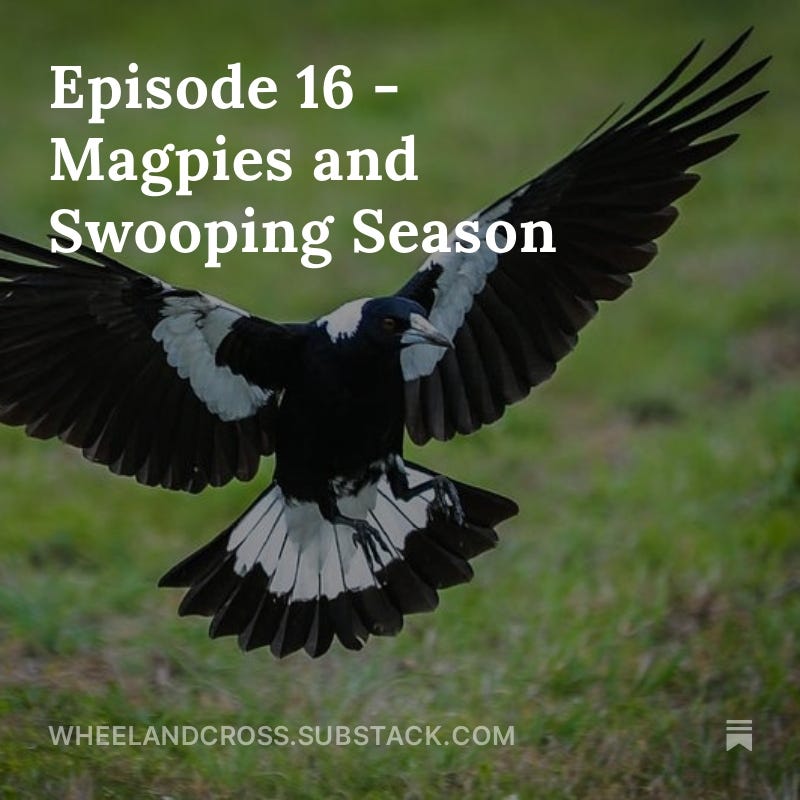
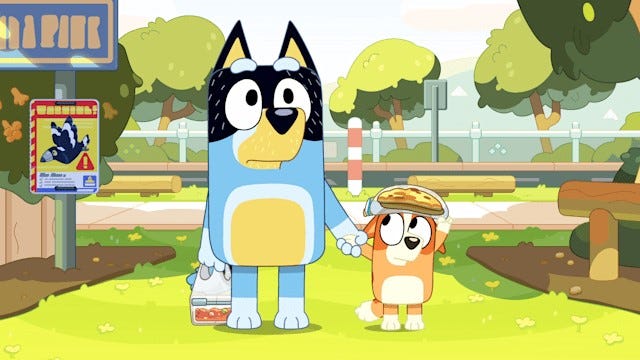










Share this post